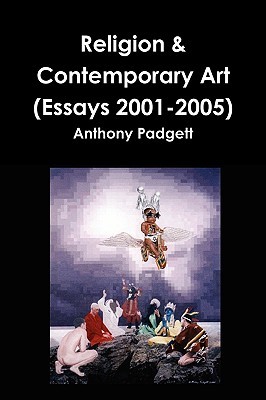
- We will send in 10–14 business days.
- Author: Anthony Padgett
- Publisher: Auditors of God
- ISBN-10: 0956158730
- ISBN-13: 9780956158734
- Format: 15.2 x 22.9 x 1.3 cm, softcover
- Language: English
- SAVE -10% with code: EXTRA
Reviews
Description
These essays explore the relationship between art and religion. The first part, 2001-2002, is essays about "The Ism", where 1994-9 Padgett united religious and spiritual perspectives by uniting the art-forms appropriate to them. The second part is essays from 2002-2005, when Padgett studied at Wimbledon School of Art, London, for an MA in Theory of Contemporary Art and Performance. Padgett looks at artists (Damien Hirst, Thomas Hirschhorn, Anton Artaud, Jake and Dinos Chapman Brothers, Guillermo Gomez-Pena etc) and develops the idea of "Postmodern Religious Art". His program of uniting the art-forms is progressed by uniting the specific material forms of religions in semi-irony with the profane - whilst keeping the sacred as of highest importance. The final part is the questionnaire that Padgett submitted to the Employment Tribunals, giving the main arguments behind his claim that the Tate Galleries were exercising religious discrimination in the way they selected artworks.
EXTRA 10 % discount with code: EXTRA
The promotion ends in 20d.20:06:47
The discount code is valid when purchasing from 10 €. Discounts do not stack.
- Author: Anthony Padgett
- Publisher: Auditors of God
- ISBN-10: 0956158730
- ISBN-13: 9780956158734
- Format: 15.2 x 22.9 x 1.3 cm, softcover
- Language: English English
These essays explore the relationship between art and religion. The first part, 2001-2002, is essays about "The Ism", where 1994-9 Padgett united religious and spiritual perspectives by uniting the art-forms appropriate to them. The second part is essays from 2002-2005, when Padgett studied at Wimbledon School of Art, London, for an MA in Theory of Contemporary Art and Performance. Padgett looks at artists (Damien Hirst, Thomas Hirschhorn, Anton Artaud, Jake and Dinos Chapman Brothers, Guillermo Gomez-Pena etc) and develops the idea of "Postmodern Religious Art". His program of uniting the art-forms is progressed by uniting the specific material forms of religions in semi-irony with the profane - whilst keeping the sacred as of highest importance. The final part is the questionnaire that Padgett submitted to the Employment Tribunals, giving the main arguments behind his claim that the Tate Galleries were exercising religious discrimination in the way they selected artworks.


Reviews